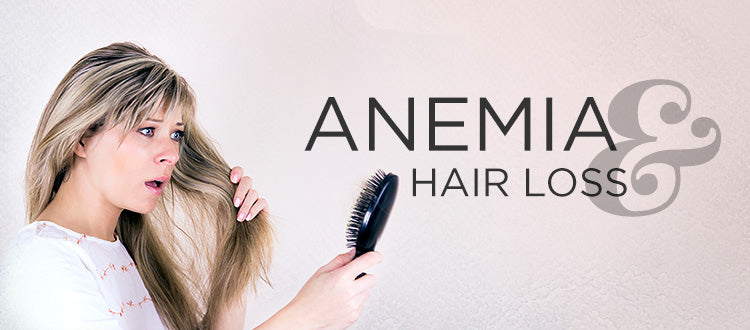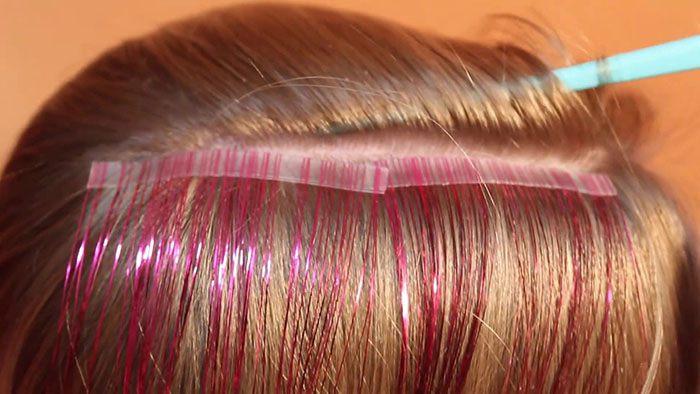Table Of Content

Selenium ingestion in an amount exceeding 400 μg daily may cause toxicity. Symptoms of acute or chronic selenium toxicity include nausea, vomiting, nail brittleness and discolorations, hair loss, fatigability, irritability, and foul breath odor [120]. An outbreak of selenium toxicity from a liquid dietary supplement that contained 200-fold the labeled concentration of selenium resulted in severe hair loss in most patients [121]. People commonly inquire about vitamin and mineral supplementation and diet as a means to prevent or manage dermatological diseases and, in particular, hair loss. Answering these queries is frequently challenging, given the enormous and conflicting body of evidence that exists on this subject.

Treatment
By Kelly BurchBurch is a New Hampshire-based freelance health writer with a bachelor's degree in communications from Boston University. “I would recommend annual lab screenings so we have a trail to look back on if there is a change,” he says. Keep reading to learn about the symptoms and complications of IDA and when to see a doctor. A small amount of hair collecting in the shower drain or hairbrush is not necessarily cause for concern. According to the Academy of Dermatology, it's perfectly normal to lose 100 or so hairs from your head every day. When there’s not enough ferritin stored in the body, your thyroid isn’t able to make enough thyroid hormone.
Who is most at risk for iron deficiency anemia?
They can be easily corrected, either with replacement thyroid hormones or iron supplements. Yes, there can be a link between hair loss and iron deficiency. "One of the first steps in diagnosing any hair loss or thinning in my practice involves checking ferritin or iron levels in the blood," Doktor tells us.
Restrictive dietary practice and TE
While most people in the USA ingest adequate amounts of folate, certain groups are at risk for deficiency (usually in association with poor diet, alcoholism, or a malabsorptive disorder). There is a significant difference in ferritin levels between women with nonscarring alopecia and healthy women. Iron-deficiency anemia is not more common among women with nonscarring alopecia.
Important to note, the daily amount increases to 27 mg/d for pregnant women of any age, and 10 mg/d for lactating women 14–18 years, and 9 mg/d for lactating women 19–50 years (NIH, n.d.). Studies so far have found alopecia due to anemia may be something that largely affects women. Our experts continually monitor the health and wellness space, and we update our articles when new information becomes available. Anemia is common in older adults, but it can be hard to identify, as some of the symptoms are common as people get older.
Hemoglobin is the part of red blood cells that gives blood its red color and enables the red blood cells to carry oxygenated blood throughout your body. If you think you have symptoms of iron deficiency, talk with a doctor. They may also do tests to see if an underlying condition needs addressing. Your genes, hormonal changes, illness, and even stress can come into play. And while iron deficiency could be at the root of your problem, if you're experiencing hair loss, your best bet is to see a dermatologist. They can perform tests to determine the cause, and if they suspect iron loss, they'll order labs to find out.

Stress Reactions
If your diet is the culprit, Dr. Brill offers several tips for improving your iron intake. Next, your doctor will order blood tests, including one called a complete blood count (CBC). This shows how many red blood cells you have, how big they are, and what shape they are. Pale skin in people with anemia is the result of a lack of red blood cells and a lack of hemoglobin in the red blood cells. When the number of red blood cells becomes severely low, there are not enough cells to reach the skin’s surface. The most common causes of iron deficiency anemia in women are blood loss during your period and pregnancy.
Focus on these three food groups to treat iron deficiency naturally - The Indian Express
Focus on these three food groups to treat iron deficiency naturally.
Posted: Wed, 30 Nov 2022 08:00:00 GMT [source]
Treating iron deficiency anemia
With anemia, heart palpitations are a sign your body is trying to compensate for a lack of oxygen. The body is circulating blood faster to make use of the little hemoglobin that is available. Hemoglobin is the iron-containing protein in red blood cells that carries oxygen from the lungs to all the body's organs and tissues. If you believe your hair loss is related to an iron deficiency, it’s important to consult with a healthcare provider before taking matters into your own hands. It may seem tempting to self-diagnose and take an iron supplement, but they do have side effects, and your good health intentions may end up leading to more severe health problems.
Most studies on zinc have revealed lower serum levels in AA patients than in controls. Folate is another water-soluble B vitamin and includes naturally occurring food folate and folic acid (fully oxidized monoglutamate). Folate is a coenzyme in the synthesis of nucleic acids and in amino acid metabolism. It exists in the plasma as 5-methyl-tetrahydrofolate, while about half of the total body content exists in the liver [22, 41]. The recommended dietary allowance of food folate is 400 mcg daily for adults, which is supported by required fortification of some foods in the USA [22].
In fact, only case reports have been used to justify the use of biotin supplements for hair growth. These case reports were in children and found that 3–5 mg biotin daily could improve hair health after 3–4 months in children with uncombable hair syndrome [37, 38]. Alopecia areata (AA) occurs when the immune system attacks the hair follicle. Studies have shown a relationship between AA and low vitamin D levels.
If you’re experiencing unusual amounts of hair loss despite dietary changes, it may be time to see your doctor for a diagnosis. Avoid using any hair growth treatments unless otherwise directed by your doctor. Another possible scenario is having “classic” hypothyroidism symptoms but testing in the normal thyroid level range. If this happens to you, ask your doctor about checking out your ferritin levels.
According to Healthline, other common types of alopecia include traction alopecia, telogen effluvium, alopecia areata, central centrifugal cicatricial alopecia (CCCA), and lichen planopilaris (LPP). With some types of hair loss, like androgenetic alopecia, the changes to the hair are permanent. While you can take steps to slow this process, the physical changes in your body make it difficult to stop losing hair entirely. Men also experience anagen and telogen effluvium in response to chemotherapy, radiation therapy, or certain medications. In these cases, the hair loss is often reversible when medication or treatment is stopped. Sudden weight loss and very restrictive diets can also cause telogen effluvium.

No comments:
Post a Comment